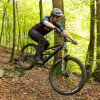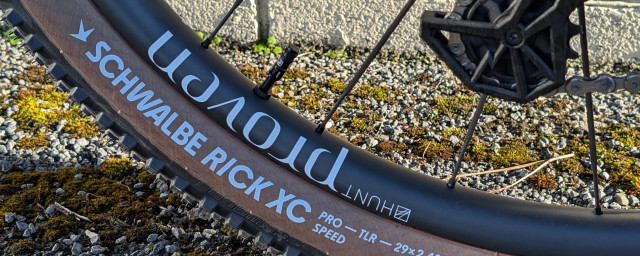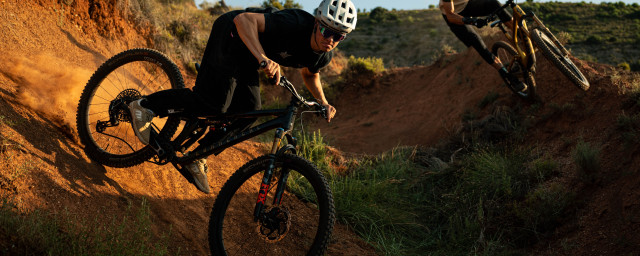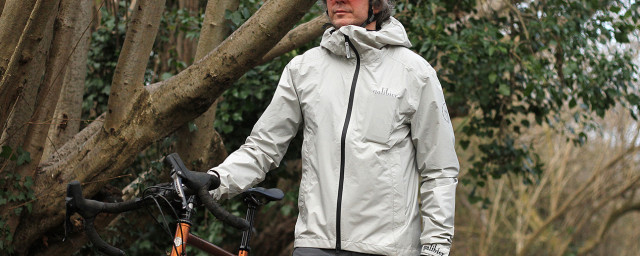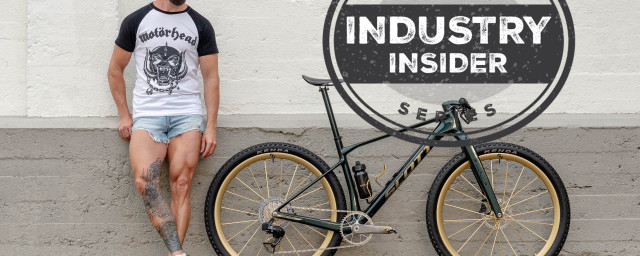Mountain bike body armour - everything you need to know

Whether you’re an experienced trail shredder or new to mountain biking, finding the right balance between staying protected and comfortable on the mountain bike can be a tough one to get right. After all, we don’t want to rock up to a cross-country mile muncher dressed like a spartan heading to war or hit the bike park in just a t-shirt and shorts. To help enhance your time on the bike without posing too much unnecessary risk, here’s our ultimate guide to mountain bike body armour.
- Can you use a road bike helmet for MTB and gravel riding?
- Mountain biking on a budget - everything you need to know
- When should you replace your bicycle helmet?
What MTB protection do I need?
Mountain bike safety starts with a good helmet and a set of the best MTB knee pads.
Your knees are often the first to hit the ground if you take a little tumble, and they can take the brunt of the force as the sudden increase of friction and abrasion slows you down.
Thankfully - owing to the benefits of D3O and similar (which we’ll get onto a little bit later) - modern knee pads have slimmed down quite a lot, packing a protective punch in a lightweight yet extra comfortable package. Knee pads take many forms, too, from the paper-thin right through to the mega burly items so you can choose the right pad for the kind of riding you enjoy.
Then there's the helmet. Your helmet should absolutely be CE-rated, which means that the manufacturer has checked the product meets EU safety, health or environmental requirements. In addition to being safety-certified, your helmet has to fit properly and be in good nick. If it is not or doesn’t do any of these things, it’s worth buying a new one.
Most of the best mountain bike helmets have come a long way since the styrofoam options of yesteryear and now they come equipped with rotational impact-reducing cradles or low-friction layers such as Mips, Koroyd, and Wavecel to name just a few.
These technologies are all designed to do one thing though, and that’s reduce rotational forces applied to the brain under an impact. Picking a helmet with Mips, for example, is a choice worth making as it adds a valuable improvement to the safety it offers and it’s getting even easier as a Mips-equipped helmet can be bought for as little as £50.
Upping the ante should do so for the protection, too
If a helmet and knee pads are considered the bare minimum for your Sunday trail ride, the protection you choose should be increased as the speed or challenge of the trails you’re planning to ride is increased. For example, the occasional day at the bike park is a fantastic way to boost your descending prowess while taking advantage of an uplift to do almost all of the pedalling for you.
However, bike parks contain trails with larger than usual features, and more challenging technical terrain and the tracks tend to encourage much greater speeds. As such, you should look to improve your protection with a full-face helmet at least. Upgrading to such a lid will reward you with better protection as a full-face lid will provide much more comprehensive coverage than an open-face or half-shell helmet will. The chin bar and increased side protection will come into its own when you find yourself sliding down the trail face-first.
One of the best things about bike park days is that they’re often uplift assisted, so you jump in the back of a van after putting your bike on a trailer and it’ll drive you to the top of the trails. So strenuous pedalling efforts are few and far between, meaning that there’s little penalty should you desire to up the protectives even further. As such, there’s no harm in opting for a body protector to add vital chest and back protection.
Enduro full-face helmet vs downhill full-face helmet
Elite-level enduro racing combines big, pedal-heavy liaisons with sections of actual downhill race tracks. There’s a lot of different terrain in between but, like modern cross-country tracks, enduro stages have become increasingly gnarly and more technically demanding. Because of that, full-face helmets are the first choice for enduro racers and are a requirement as stated in many rule books. However, proper downhill-spec full-face helmets are heavy and are designed to intake air or ventilate at the speeds of downhill riding, although a mainstay in the early enduro racer’s protective roster.
That’s where the enduro-orientated full-face helmet steps in, with an early example being the Troy Lee Designs Stage Mips. This helmet dropped loads of grams against the brand’s downhill-focussed full-face helmets and introduced large vents but importantly, it is certified to CPSC 1203, CE EN1078, ASTM F1952, ASTM F2032, and AS/NZS 2063 standards, the same as its DH lid, the D4.
The argument for a DH-spec full-face helmet is that they offer better protection due to less venting and more coverage, as well as being designed to absorb impact at the higher speeds that come part and parcel of downhill riding.
Pads and the role of D3O
D3O is a non-Newtonian material that hardens upon impact. It’s bendy, so it’s comfortable when needed but as it’s struck during a spill, it’ll stiffen up to dissipate the impact energy and it’s pretty darn good at it. Since its conception, it’s been widely adopted by many brands for use in knee, elbow and body protectors, and if it’s not D3O, it’s another material that’s designed to do a very similar thing. Take Leatt’s Airflex/Reaflex protectives for example.
But what D3O has enabled brands to do is create mighty slim knee and elbow pads, as well as full body protectors that can be worn during any ride with minimal negative effects to comfort and without too much of a weight penalty. This means that even those who usually ride sans pads can benefit from some solid protection without the usual encumbrance of traditional pads.
It’s not all about super lightweight pads, however, as D3O or similar materials are incredibly common in burlier protectives designed to cope with the knocks of enduro and downhill riding. The benefit here is that the thicker D3O caps offer some level of flex, especially as it warms with body heat which makes for better comfort while pedalling and moving around the bike. Whereas previously, heavier-hitting guards would get hard plastic caps that hardly flex at all.
It’s all about balance
Protecting yourself properly when you’re out on the bike is a carefully picked balance of comfort and protection. As such, what you choose to wear is totally up to you and there’s no one rule unless it’s written in a race rule book. `One thing you should always do is wear a helmet.
For example, if the trails are mellow and you’re not planning on riding hell for leather, you can get away with popping out with just a helmet, as long as you’re confident. Likewise, there’s nothing wrong with turning up to your Sunday ride fully padded up. If a lot of protection makes you feel comfortable and ride with more confidence, you’ll be riding safer from the outset. And the same goes the other way around.
Less protection often means more breathability, better cooling and freer movement over the bike, which is something to consider when your ride includes a lot of pedalling or climbing. Of course, you can you from removing pads during a climb and slip them on when you’re about to begin a descent, as long as you’ve got somewhere to store them.








